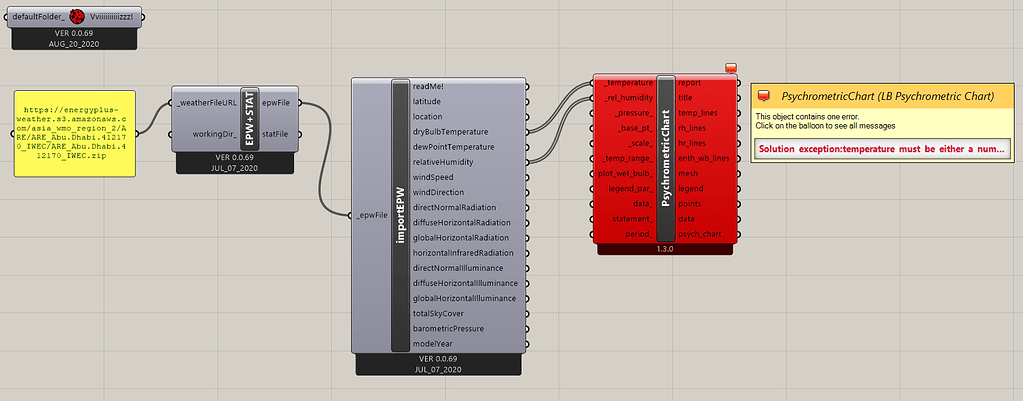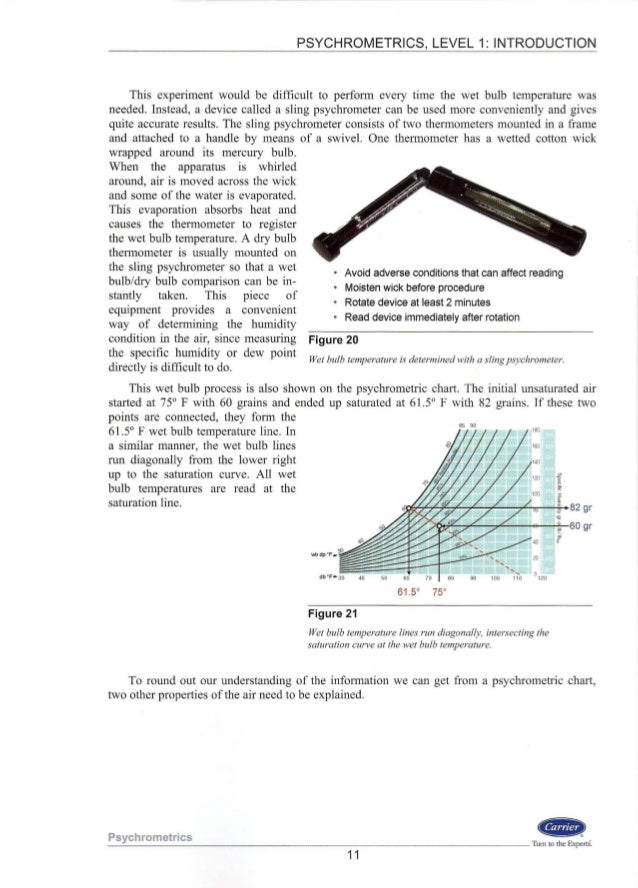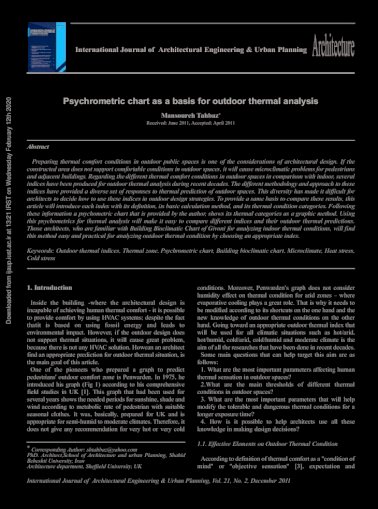
The value indicated by a wet-bulb thermometer often provides an adequate approximation of the thermodynamic wet-bulb temperature.

The thermodynamic wet-bulb temperature is a thermodynamic property of a mixture of air and water vapor. WMO provides a page chapter on the measurement of temperature. The name implies that the sensing bulb or element is in fact dry. Technically, the temperature registered by the dry-bulb thermometer of a psychrometer.

In meteorology and psychrometrics the word temperature by itself without a prefix usually means dry-bulb temperature. The term dry-bulb is customarily added to temperature to distinguish it from wet-bulb and dew point temperature. The dry-bulb temperature is the temperature indicated by a thermometer exposed to the air in a place sheltered from direct solar radiation. Molds and fungi can be controlled by keeping relative humidity low. In many industrial applications it is important to avoid condensation that would ruin product or cause corrosion. In industrial drying applications, such as drying paper, manufacturers usually try to achieve an optimum between low relative humidity, which increases the drying rate, and energy usage, which decreases as exhaust relative humidity increases. Industries that use these materials are concerned with relative humidity control in production and storage of such materials. PSYCHROMETRY EXAMPLE GRAPHICAL METHOD PART 1

Such substances include cotton, paper, cellulose, other wood products, sugar, calcium oxide burned lime and many chemicals and fertilizers. Many substances are hygroscopicmeaning they attract water, usually in proportion to the relative humidity or above a critical relative humidity. In human terms, our thermal comfort is in large part a consequence of not just the temperature of the surrounding air, but because we cool ourselves via perspiration the extent to which that air is saturated with water vapor. Psychrometricspsychrometryand hygrometry are names for the field of engineering concerned with the physical and thermodynamic properties of gas-vapor mixtures.Īlthough the principles of psychrometry apply to any physical system consisting of gas-vapor mixtures, the most common system of interest is the mixture of water vapor and air, because of its application in heating, ventilation, and air-conditioning and meteorology.


 0 kommentar(er)
0 kommentar(er)
